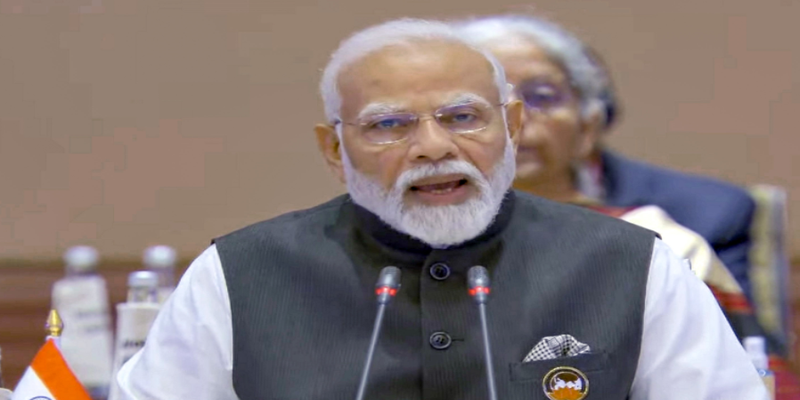The power of 21st century is now in small chip: PM Modi


“The day is not far when the smallest chip made in India will drive the biggest change in the world,” PM Modi said. Adding: “The day is not far when the world will say ‘Designed in India, Made in India, Trusted by the World’.”
Noting the presence of semiconductor sector experts from across the globe, with representation from around 50 countries, Modi emphasised that India’s innovation and youth power are also visibly present at the event. This unique combination, he said, sends a clear message: “The world trusts India, the world believes in India, and the world is ready to build the semiconductor future with India.”
He said that while oil shaped the previous century, the power of the 21st century is now concentrated in the small chip. Although small in size, these chips have the potential to significantly accelerate global progress.
PM Modi said the global semiconductor market has already reached $600 billion and is expected to surpass $1 trillion in the coming years. “Given the pace at which India is advancing in the semiconductor sector, India will hold a significant share in this $1 trillion market,” he added.
Addressing investors, he expressed India’s readiness to welcome them with an open heart and said, “Design is ready. Mask is aligned. Now is the time for precision execution and delivery at scale.”
India’s policies are not short-term signals but long-term commitments, he said, assuring that every investor’s needs will be met. “In total, 10 semiconductor projects are now underway, involving an investment of over $18 billion (more than Rs 1.5 lakh crore)… This reflects the growing global trust in India.”
Emphasising that in the semiconductor sector, speed matters, he said, “The shorter the time from file-to-factory, and the lesser the paperwork, the sooner wafer work can begin.”
The government, he said, is working with this very approach.
The National Single-Window System has been implemented, enabling all approvals from both the Central and State governments to be accessed on a single platform. Semiconductor parks are being developed across the country under a plug-and-play infrastructure model, which offers facilities such as land, power supply, port and airport connectivity, and access to a skilled worker pool.
When such infrastructure is combined with incentives, industrial growth is inevitable, he said, adding that through PLI incentives or design-linked grants, India is offering end-to-end capabilities.
“India is moving beyond backend operations and progressing towards becoming a full-stack semiconductor nation, and the day is not far when India’s smallest chip will drive the world’s biggest change…India has reached this stage by following the mantra of reform, perform, and transform. A new phase of next-generation reforms will soon be initiated,” he added.
He also announced that “the Design-Linked Incentive Scheme is being restructured to better serve its objectives.” The Prime Minister said CG Power’s pilot plant for semiconductors commenced operations on August 28, and a pilot of Kaynes Technology is also about to begin. Test chips from Micron Technology and Tata Electronics are already in production.
“Commercial chip production will begin this year,” he reiterated.
Emphasising that India’s semiconductor success story is not confined to a single vertical or a single technology, Modi stated that India is building a comprehensive ecosystem: one that encompasses designing, manufacturing, packaging, and high-tech devices, all within the country.
He clarified that the Semiconductor Mission is not limited to establishing a single fab or producing a single chip. Instead, India is creating a robust semiconductor ecosystem that will make the nation self-reliant and globally competitive. Underlining another key feature of India’s semiconductor mission, he said that the country is advancing in this sector alongside the world’s most advanced technologies. India’s focus is to empower emerging technologies through chips manufactured domestically.
Modi noted that design centres being developed in Noida, on the outskirts of the national capital, and Bengaluru are working on some of the world’s most advanced chips, capable of storing billions of transistors. These chips will power the immersive technologies of the 21st century.
Addressing the challenges faced by the global semiconductor sector, he said India is actively working to overcome them. While steel is the foundation of towering buildings and impressive physical infrastructure visible in cities, the foundation of India’s digital infrastructure is built on critical minerals. “India is currently working on the National Critical Minerals Mission and is committed to meeting its demand for rare minerals domestically.”
Over the past four years, significant progress has been made on critical minerals projects, he said, adding the government is committed to developing Indian intellectual property in the sector.
Discover more from News Hub
Subscribe to get the latest posts sent to your email.






